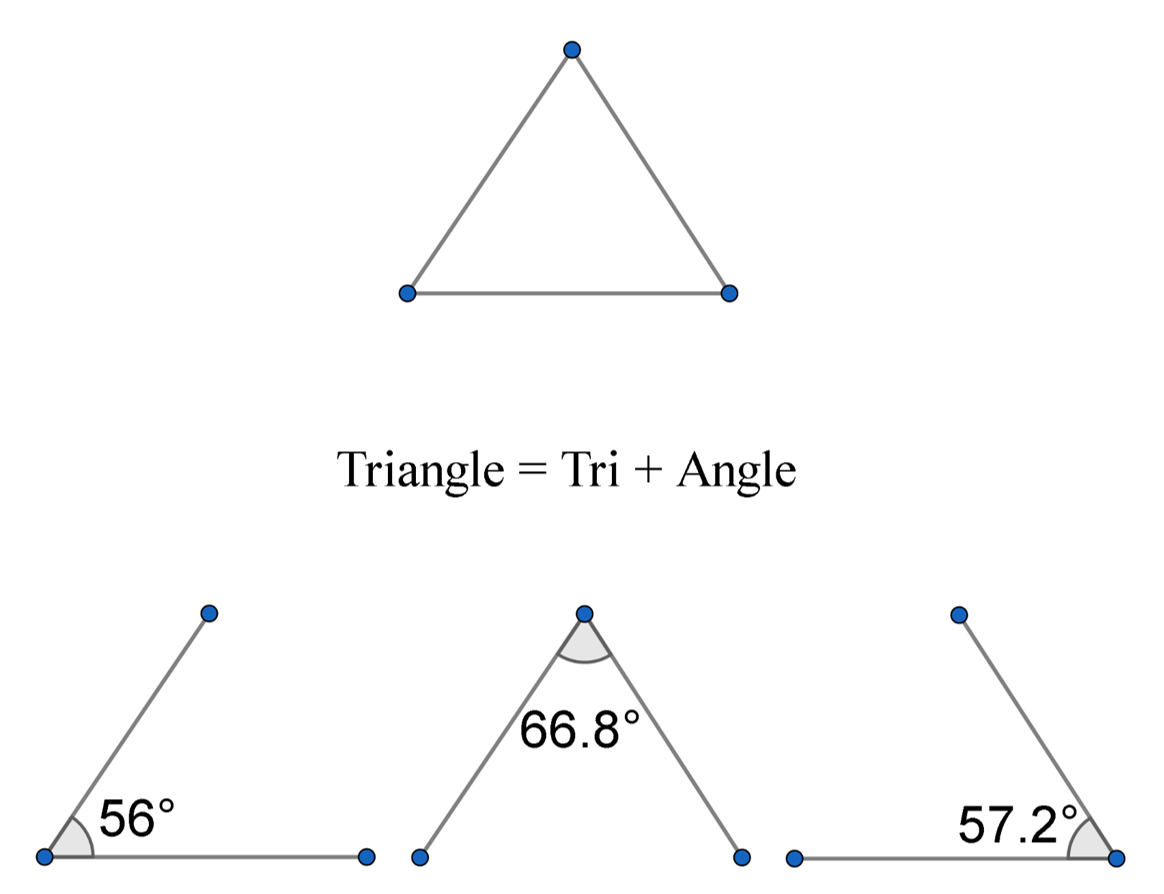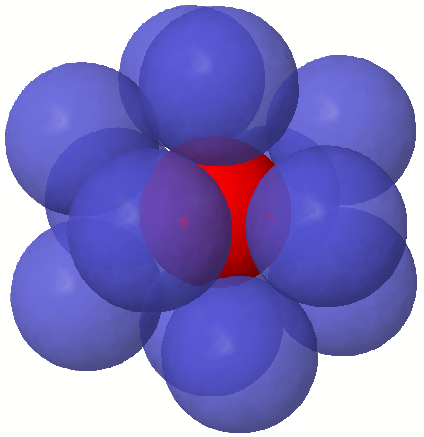|
Urquhart Graph
In computational geometry, the Urquhart graph of a set of points in the plane, named after Roderick B. Urquhart, is obtained by removing the longest edge from each triangle in the Delaunay triangulation. The Urquhart graph was described by , who suggested that removing the longest edge from each Delaunay triangle would be a fast way of constructing the relative neighborhood graph (the graph connecting pairs of points p and q when there does not exist any third point r that is closer to both p and q than they are to each other). Since Delaunay triangulations can be constructed in time O(n\log n), the same time bound holds for the Urquhart graph as well. Although it was later shown that the Urquhart graph is not exactly the same as the relative neighborhood graph, it can be used as a good approximation to it. The problem of constructing relative neighborhood graphs in O(n\log n) time, left open by the mismatch between the Urquhart graph and the relative neighborhood graph, was solv ... [...More Info...] [...Related Items...] OR: [Wikipedia] [Google] [Baidu] |
Computational Geometry
Computational geometry is a branch of computer science devoted to the study of algorithms which can be stated in terms of geometry. Some purely geometrical problems arise out of the study of computational geometric algorithms, and such problems are also considered to be part of computational geometry. While modern computational geometry is a recent development, it is one of the oldest fields of computing with a history stretching back to antiquity. Computational complexity is central to computational geometry, with great practical significance if algorithms are used on very large datasets containing tens or hundreds of millions of points. For such sets, the difference between O(''n''2) and O(''n'' log ''n'') may be the difference between days and seconds of computation. The main impetus for the development of computational geometry as a discipline was progress in computer graphics and computer-aided design and manufacturing (CAD/CAM), but many problems in computational geometry ar ... [...More Info...] [...Related Items...] OR: [Wikipedia] [Google] [Baidu] |
Edge (geometry)
In geometry, an edge is a particular type of line segment joining two vertices in a polygon, polyhedron, or higher-dimensional polytope. In a polygon, an edge is a line segment on the boundary, and is often called a polygon side. In a polyhedron or more generally a polytope, an edge is a line segment where two faces (or polyhedron sides) meet. A segment joining two vertices while passing through the interior or exterior is not an edge but instead is called a diagonal. Relation to edges in graphs In graph theory, an edge is an abstract object connecting two graph vertices, unlike polygon and polyhedron edges which have a concrete geometric representation as a line segment. However, any polyhedron can be represented by its skeleton or edge-skeleton, a graph whose vertices are the geometric vertices of the polyhedron and whose edges correspond to the geometric edges. Conversely, the graphs that are skeletons of three-dimensional polyhedra can be characterized by Steinitz's th ... [...More Info...] [...Related Items...] OR: [Wikipedia] [Google] [Baidu] |
Triangle
A triangle is a polygon with three edges and three vertices. It is one of the basic shapes in geometry. A triangle with vertices ''A'', ''B'', and ''C'' is denoted \triangle ABC. In Euclidean geometry, any three points, when non- collinear, determine a unique triangle and simultaneously, a unique plane (i.e. a two-dimensional Euclidean space). In other words, there is only one plane that contains that triangle, and every triangle is contained in some plane. If the entire geometry is only the Euclidean plane, there is only one plane and all triangles are contained in it; however, in higher-dimensional Euclidean spaces, this is no longer true. This article is about triangles in Euclidean geometry, and in particular, the Euclidean plane, except where otherwise noted. Types of triangle The terminology for categorizing triangles is more than two thousand years old, having been defined on the very first page of Euclid's Elements. The names used for modern classification a ... [...More Info...] [...Related Items...] OR: [Wikipedia] [Google] [Baidu] |
Delaunay Triangulation
In mathematics and computational geometry, a Delaunay triangulation (also known as a Delone triangulation) for a given set P of discrete points in a general position is a triangulation DT(P) such that no point in P is inside the circumcircle of any triangle in DT(P). Delaunay triangulations maximize the minimum of all the angles of the triangles in the triangulation; they tend to avoid sliver triangles. The triangulation is named after Boris Delaunay for his work on this topic from 1934. For a set of points on the same line there is no Delaunay triangulation (the notion of triangulation is degenerate for this case). For four or more points on the same circle (e.g., the vertices of a rectangle) the Delaunay triangulation is not unique: each of the two possible triangulations that split the quadrangle into two triangles satisfies the "Delaunay condition", i.e., the requirement that the circumcircles of all triangles have empty interiors. By considering circumscribed spheres ... [...More Info...] [...Related Items...] OR: [Wikipedia] [Google] [Baidu] |
Relative Neighborhood Graph
In computational geometry, the relative neighborhood graph (RNG) is an undirected graph defined on a set of points in the Euclidean plane by connecting two points p and q by an edge whenever there does not exist a third point r that is closer to both p and q than they are to each other. This graph was proposed by Godfried Toussaint in 1980 as a way of defining a structure from a set of points that would match human perceptions of the shape of the set.. Algorithms showed how to construct the relative neighborhood graph of n points in the plane efficiently in O(n\log n) time. It can be computed in O(n) expected time, for random set of points distributed uniformly in the unit square. The relative neighborhood graph can be computed in linear time from the Delaunay triangulation of the point set.. Generalizations Because it is defined only in terms of the distances between points, the relative neighborhood graph can be defined for point sets in any and for non-Euclidean metrics. Com ... [...More Info...] [...Related Items...] OR: [Wikipedia] [Google] [Baidu] |
General Position
In algebraic geometry and computational geometry, general position is a notion of genericity for a set of points, or other geometric objects. It means the ''general case'' situation, as opposed to some more special or coincidental cases that are possible, which is referred to as special position. Its precise meaning differs in different settings. For example, generically, two lines in the plane intersect in a single point (they are not parallel or coincident). One also says "two generic lines intersect in a point", which is formalized by the notion of a generic point. Similarly, three generic points in the plane are not collinear; if three points are collinear (even stronger, if two coincide), this is a degenerate case. This notion is important in mathematics and its applications, because degenerate cases may require an exceptional treatment; for example, when stating general theorems or giving precise statements thereof, and when writing computer programs (see '' generic co ... [...More Info...] [...Related Items...] OR: [Wikipedia] [Google] [Baidu] |
Euclidean Minimum Spanning Tree
A Euclidean minimum spanning tree of a finite set of points in the Euclidean plane or higher-dimensional Euclidean space connects the points by a system of line segments with the points as endpoints, minimizing the total length of the segments. In it, any two points can reach each other along a path through the line segments. It can be found as the minimum spanning tree of a complete graph with the points as vertices and the Euclidean distances between points as edge weights. The edges of the minimum spanning tree meet at angles of at least 60°, at most six to a vertex. In higher dimensions, the number of edges per vertex is bounded by the kissing number of tangent unit spheres. The total length of the edges, for points in a unit square, is at most proportional to the square root of the number of points. Each edge lies in an empty region of the plane, and these regions can be used to prove that the Euclidean minimum spanning tree is a subgraph of other geometric graphs includin ... [...More Info...] [...Related Items...] OR: [Wikipedia] [Google] [Baidu] |
Connected Graph
In mathematics and computer science, connectivity is one of the basic concepts of graph theory: it asks for the minimum number of elements (nodes or edges) that need to be removed to separate the remaining nodes into two or more isolated subgraphs. It is closely related to the theory of network flow problems. The connectivity of a graph is an important measure of its resilience as a network. Connected vertices and graphs In an undirected graph , two '' vertices'' and are called connected if contains a path from to . Otherwise, they are called disconnected. If the two vertices are additionally connected by a path of length , i.e. by a single edge, the vertices are called adjacent. A graph is said to be connected if every pair of vertices in the graph is connected. This means that there is a path between every pair of vertices. An undirected graph that is not connected is called disconnected. An undirected graph ''G'' is therefore disconnected if there exist two vertic ... [...More Info...] [...Related Items...] OR: [Wikipedia] [Google] [Baidu] |
Computational Geometry
Computational geometry is a branch of computer science devoted to the study of algorithms which can be stated in terms of geometry. Some purely geometrical problems arise out of the study of computational geometric algorithms, and such problems are also considered to be part of computational geometry. While modern computational geometry is a recent development, it is one of the oldest fields of computing with a history stretching back to antiquity. Computational complexity is central to computational geometry, with great practical significance if algorithms are used on very large datasets containing tens or hundreds of millions of points. For such sets, the difference between O(''n''2) and O(''n'' log ''n'') may be the difference between days and seconds of computation. The main impetus for the development of computational geometry as a discipline was progress in computer graphics and computer-aided design and manufacturing (CAD/CAM), but many problems in computational geometry ar ... [...More Info...] [...Related Items...] OR: [Wikipedia] [Google] [Baidu] |

